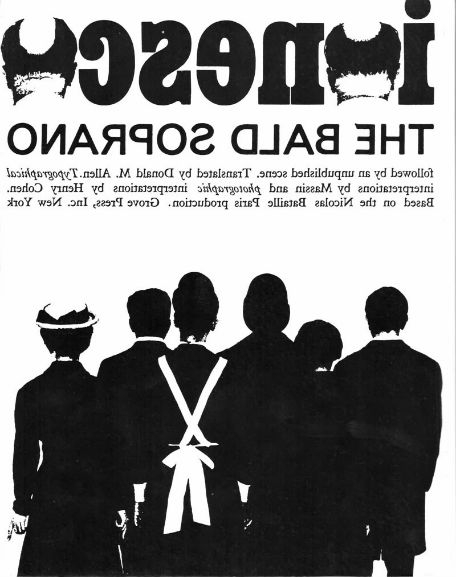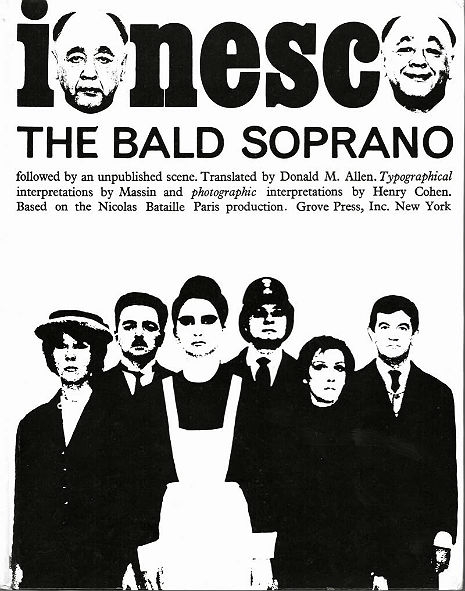
Playwright Eugène Ionesco was one of the founding fathers of the Theatre of the Absurd, a school defined by cultural historian Martin Esslin (in his influential 1960 book of the same title) as a genre which dramatized Albert Camus’s philosophy that life is inherently sans meaning. That our existence on Earth is both absurd and pointless. That we’re born into a godless world. We live. We die. Along the way we might do certain things—even perform acts of great compassion or heroism—but ultimately none of it really matters. Death swallows everything and everyone in the end.

While trying to learn English via the ASSiMiL method for teaching foreign languages (which requires phonetic memorization of mundane “conversational” sentences) Ionesco was inspired by the company’s book Anglais Sans Peine (“English Without Toil”) and the generic “characters” within it, “Mr. and Mrs. Smith,” to write his first play, La Cantatrice Chauve or The Bald Soprano. It was debuted in Paris in 1950 but initially not much of a success.

When the play opens, we meet Mr. and Mrs. Smith in their drab sitting room. He is hidden behind his newspaper, smoking a pipe and clicking his tongue. She is darning socks. After a long moment of “English silence,” Mrs. Smith announces:
“There, it’s nine o’clock. We’ve drunk the soup, and eaten the fish and chips and the English salad. The children have drunk English water. We’ve eaten well this evening. That’s because we live in the suburbs of London and because our name is Smith.”
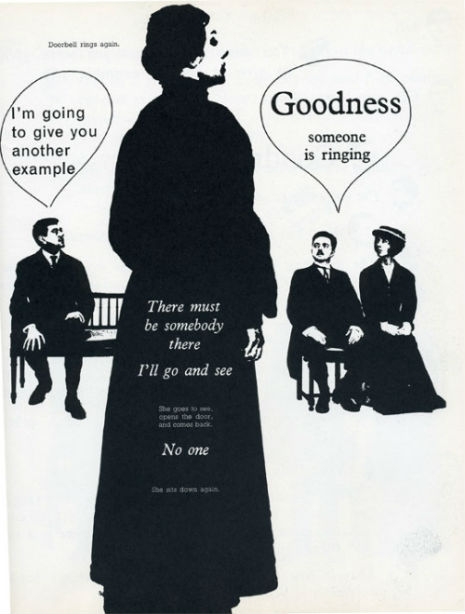
Ionesco’s special talent was ridiculing authority figures, brutally portraying humankind’s insignificance and lampooning the banality of everyday communication. He would artfully employ clichés and witless truisms as dialogue. His characters often talk right past one another, if not simply shouting non sequiturs into the wind. No one is ever listening to what anyone else is saying in his plays.
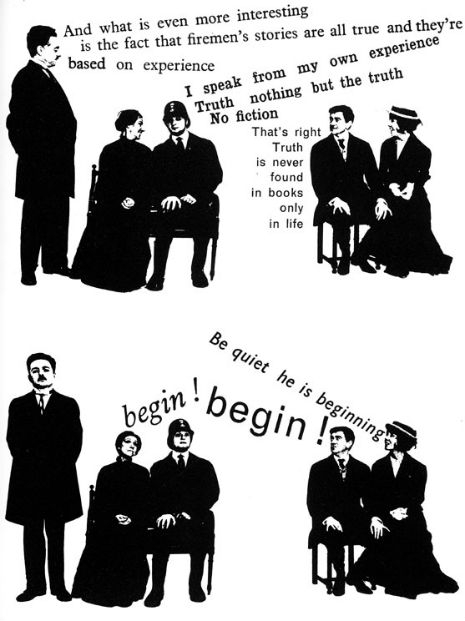
The Bald Soprano was composed as a sort of continuous loop. The last scene contains stage instructions to begin the performance over again, from the very first line but with “the Martins” (the dinner guests of the Smiths) doing the lines that the Smiths had just said, and vice versa. And then repeat. And then repeat again. Ionesco’s point is that the characters and their banal, absurdist dialogue are interchangeable. None of it matters. Who cares?

The Bald Soprano has been continuously performed in France since 1957 at the Théâtre de la Huchette and due to the simplicity of the language lesson-level dialogue it has been translated into many, many languages and staged the world over. Indeed, it’s one of the most widely performed plays of all time. Dozens, if not hundred of clips of the play from various productions can be found on YouTube.
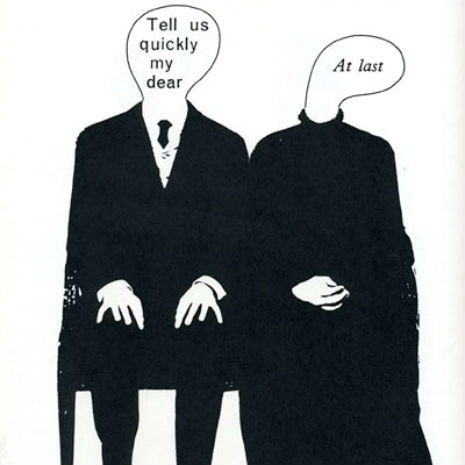
The Bald Soprano was also made into of one of the most beautiful books ever published, a volume coveted by designers, typography fans and bibliophiles. It was designed by Robert Massin—or just Massin, as he prefers—then the art director of Éditions Gallimard, one of France’s leading book publishers. Massin has probably designed more French book covers than anyone else. It’s been said of him that every Frenchman has his work in their homes, on their bookshelves, but it is for this volume—and another, La Lettre et l’Image—that he is best known for, indeed revered, by graphic designers on this side of the Atlantic. No one had ever really done anything quite like this before and Massin’s eccentric typography and photomontage style—where words stretched like rubber, exploded and dripped down the page—was extremely influential. The photos of the Théâtre de la Huchette actors were taken by Henry Cohen.

Eugène Ionesco with a copy of Massin’s innovative graphic take on his play
I’ve had a copy of the American version of The Bald Soprano, as published by Grove Press for over 20 years. It’s truly one of my most prized possessions. The price, written in pencil inside the front cover says that I paid $15 for it back in the mid 90s, although I have seen it priced as high as $350. (There are some super cheap copies of The Bald Soprano currently for sale on Amazon if you hurry up and grab one). I’m often asked “Where do you guys come up with all your ideas for these blog posts?” and the answer in this particular instance was me going “Oh shit, what can I blog about today?” as I sipped my morning coffee. And then I looked at my coffee table, where my copy The Bald Soprano lives and thought “Oh, I haven’t blogged about this yet…”
I’m good like that. In any case, enjoy these pages from the 1965 Grove Press edition of The Bald Soprano.
